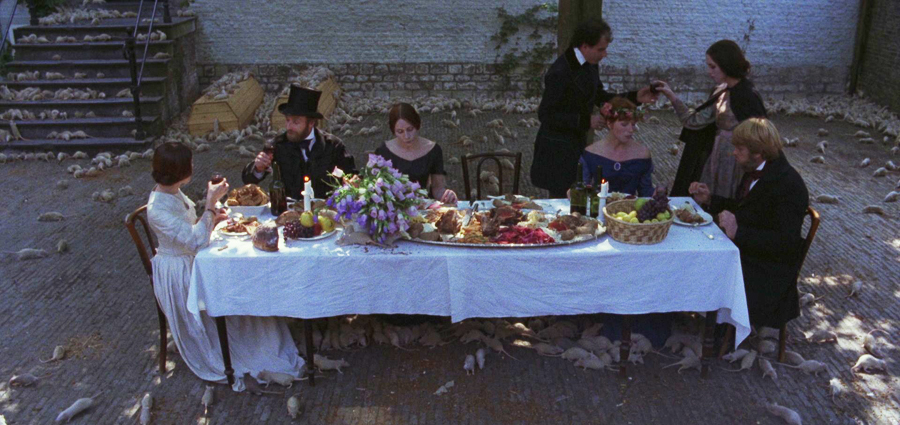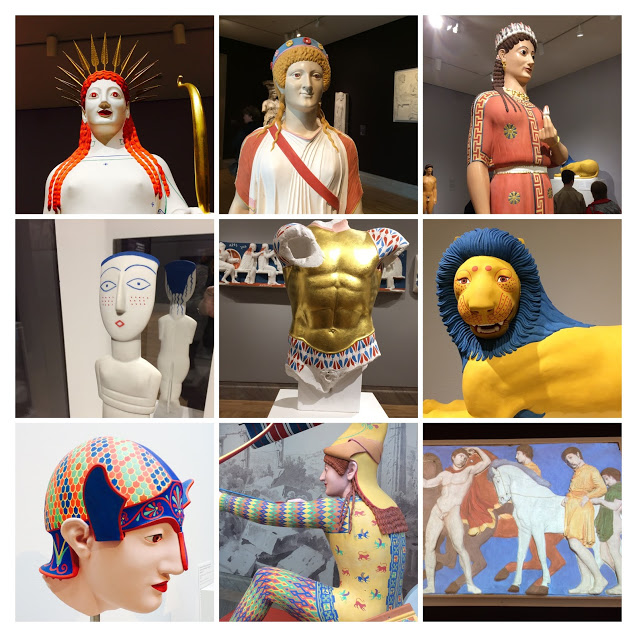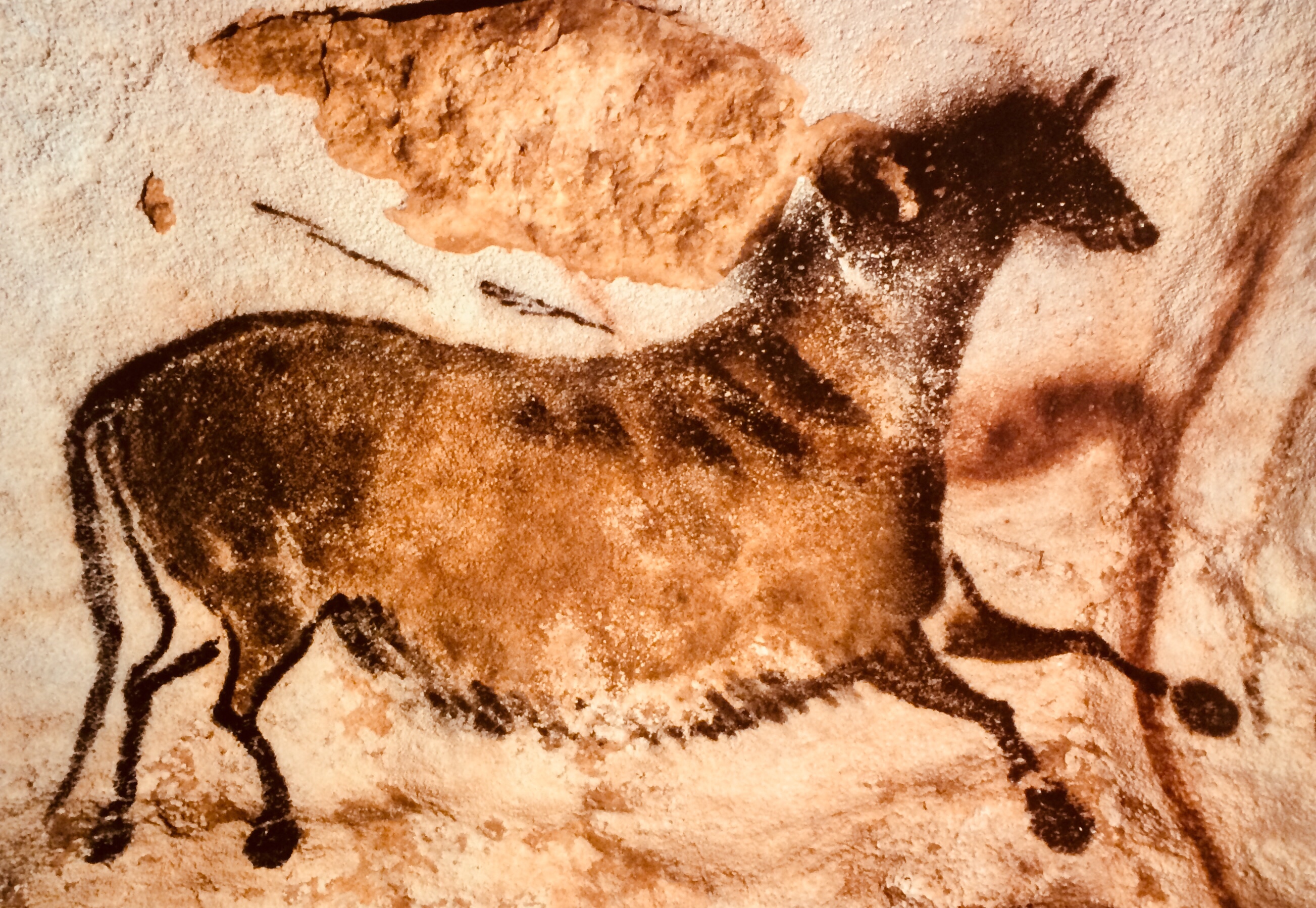
We view original art to have a hidden moment with it, intimacy. Like Venus, patron of art, we want to have a relationship, a love affair, something personal. Botticelli was the high point for me. The chance to see so much of his work in the Uffizi was a revelation. Heresy: I like Botticelli better than Leonardo. Leonardo was a techie; Botticelli was a mystic. I write here my own discoveries from looking at the originals. This is an art geek post, so be forewarned. I don’t know if my revelations are unique, but at least they are mine.
There is movement everywhere in a Botticelli painting, but in the atmosphere. The roses are floating down, her shell boat is literally floating in on the tide, washed in on the foam. Venus was “foam born” and if you look at the veils of wave at the bottom of the shell you can see the shell moving. Botticelli mixed alabaster with tempera to add a light pastel opacity to the painting. The sea, with its little waves, has the color and flatness of maps; he was good friends with the explorer Amerigo Vespucci and the families lived close to each other, so I regard the flat sea as another visual pun. Every part of nature is flowing, waving, alive. This reminds me of the movies of Ridley Scott, who often has snow, ashes or petals drifting down, especially in epic scenes.
I found out that Botticelli had probably been trained as a goldsmith after looking at the gilding used as a painterly element. In Venus, the whole atmosphere is that of dawn, and he using stripes of gold on his orange tree trunks— the oranges in bloom with their sweet blossoms to add a ghost of fragrance to the work—reflects that. He uses arcs of gold on the pebbles of the earth bank on the right, where Venus is about to step off. The shell casts a long dawn shadow.

There’s a real joy in nature in the paintings. I loved seeing the nearly invisible wild iris in the corner of the Spring painting. And there are visual jokes: in Venus, the Wind is blowing a spume at her… just like the Annunciations, with their lines connecting the angel and Mary. He’s fecundating her. Microscopically fine veils show lines of energy, light moving in waves, and connect visual elements. The veils are like starlight made tangible. About the gilding… I had not seen it used like this, on simple trunks and little pebbles, anywhere else. I saw it used only for halos and sometimes on fabric ornamentation on the Virgin’s robe. Using the gilding on trees and rocks instead of halos makes nature holy. More encoded visual puns!


I ended up spending more time with the Allegory of Spring. It’s just such an interesting painting. There never seems to be much that’s formulaic in these works. I was alone for a time with the painting; that might not ever happen again.
The leaves overhead are oranges, and Mercury seems to be poking down an orange to eat with his caduceus. Mercury loves to steal things. It is very human. I think Mercury might be Botticelli. His paintings are witty. They have humor.


I can’t say much about the Renaissance, but it was not about the invention of three-point perspective; that’s technology embodied. It’s in the mixing of cultures and the breaking of worn-out molds that the good stuff happens, the brief blooms, like the sixties. Botticelli broke the musty war-and-religion genres of the time with his loud paganism. It’s easy to think that these smooth faces are inventions, but I saw this museum visitor in the Map Room and I thought, oh, a Botticelli face. You think that this radiance is a painterly trope, but then there was this guy walking by. I snapped a stealth photo.

What if Botticelli was your interior designer? This wall painting was moved intact from someone’s house. Interesting to see a Botticelli with earthier colors because the medium was different. I had not seen this one before. I would lay odds that the background in the painting reflected the actual background of the loggia, vineyard, and setting of the patron’s house.
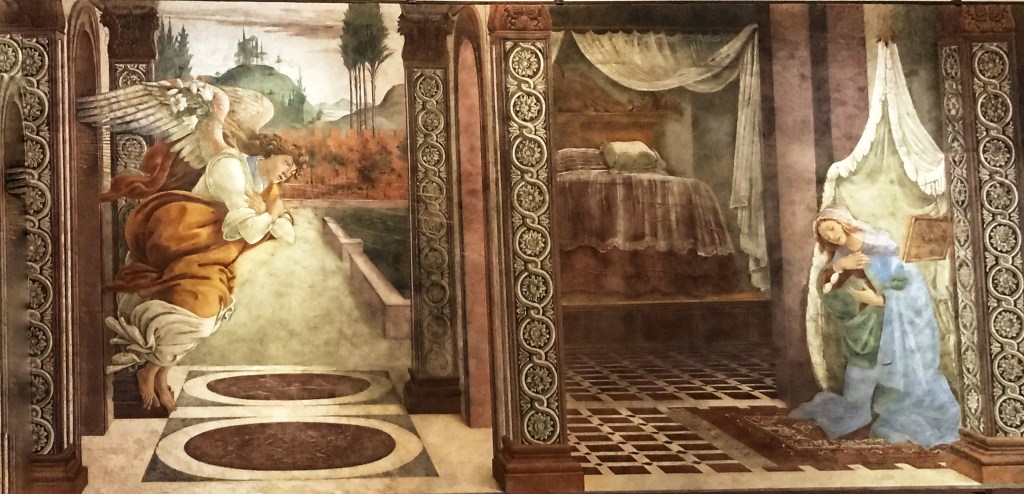
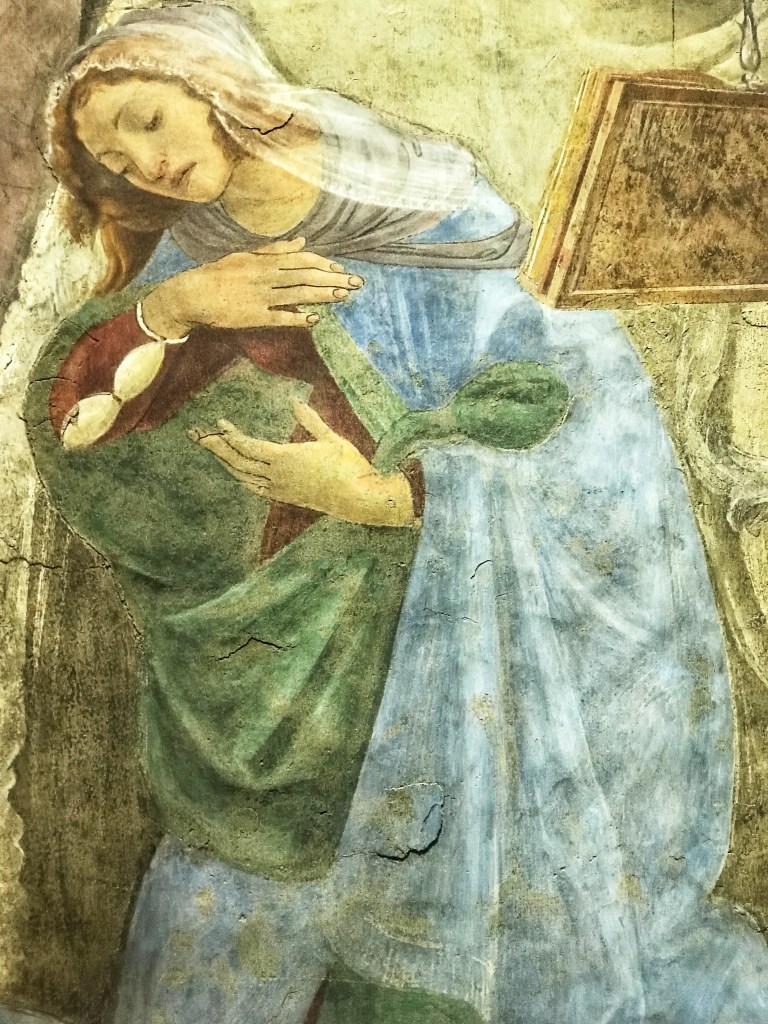
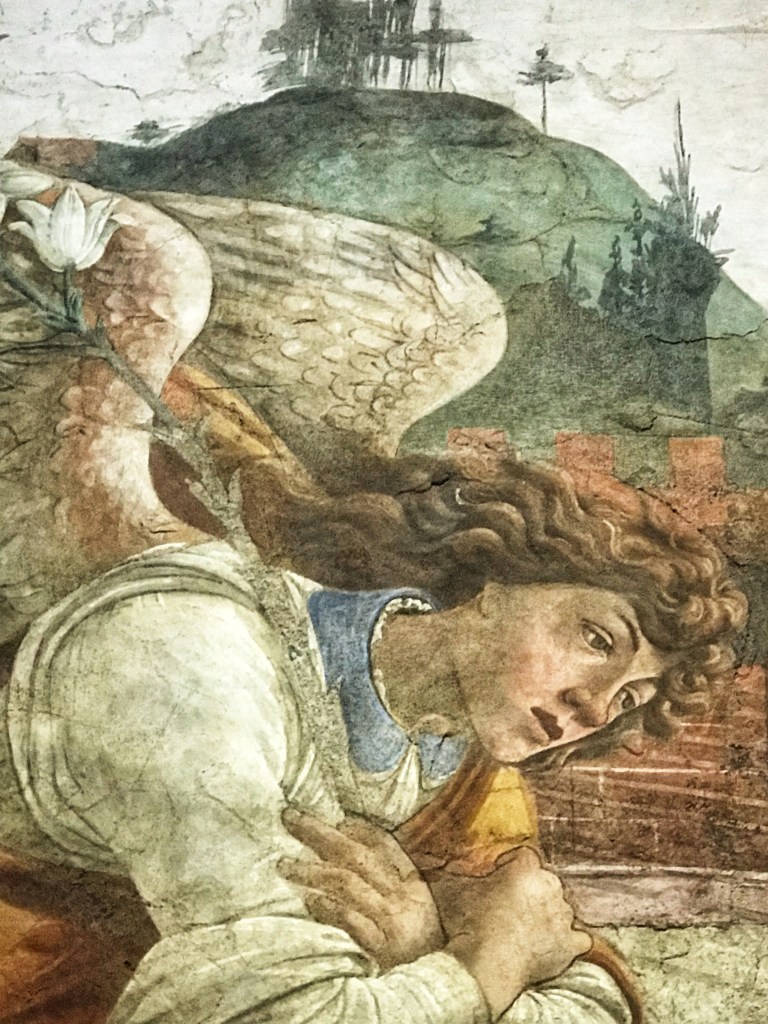

More green squiggle marks behind him in another Uffizi painting
Movement, bringing real nature into painting, and starlight made visible. And the faces, and the wit. That’s my Botticelli, the one I met in person through the originals. We might need him again as our world turns back into increasing darkness.






